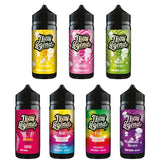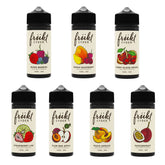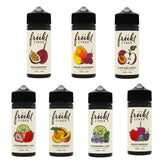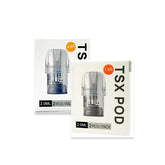How to Replace a Vape Coil
Replacing a vape coil sounds technical, but it’s actually quick once you know the order: remove → prime → install → wait → start low. Do it right and flavor snaps back, vapor gets smoother, and your tank stops gurgling. This guide keeps things simple and practical, so even first-timers can change coils confidently.
We’ll cover when to replace a coil, exact priming methods, easy device-specific steps, and fixes for common issues like leaks, spitback, and weak flavor. You’ll also learn habits that make coils last longer, how to match wattage and airflow, and what 2025 “smart” features actually help. Keep a spare coil handy you’ll be done in minutes.
What a Vape Coil Is (and Why It Matters)
A coil is a tiny heater wrapped around a wick (usually cotton or ceramic). Press the fire button, the coil warms up, the soaked wick vaporizes e-liquid, and you inhale the result. Good coils heat evenly, feed e-liquid consistently, and resist burning under normal use.
Mesh coils spread heat evenly for strong, smooth flavor. Wire coils (Kanthal/SS/NiChrome) are cheap and versatile but can develop hot spots. Ceramic coils offer very clean taste and long life with slightly softer warmth. Your experience depends on resistance (ohms), wattage, airflow, and juice thickness (VG/PG).
When to Replace a Vape Coil
Clear signs: burnt or singed taste (especially at the start of a puff), muted or papery flavor, weak vapor at normal power, gurgling/flooding, or dark tea-colored e-liquid after refills. Two or more symptoms together usually mean “swap now.”
Typical lifespan: pod coils ~5–10 days; wire ~7–10 days; mesh ~10–20 days; ceramic ~15–30 days. Heavy/high-wattage users often see 4–7 days; light users can stretch mesh/ceramic 3–4 weeks. If you burn coils inside a week, check priming, wattage, sweetener levels, and pause time between puffs.
Coil Lifespan by Type (Quick Reference)
|
Coil Type |
Typical Wattage |
Average Lifespan |
Notes |
|
Pod |
10–25 W |
5–10 days |
Small wicks; gentle draws help |
|
Wire |
15–60 W |
7–10 days |
Budget friendly; watch hot spots |
|
Mesh |
20–80 W |
10–20 days |
Even heat; strong flavor |
|
Ceramic |
15–50 W |
15–30 days |
Clean taste; softer warmth |
What You’ll Need (Tools & Supplies)
Keep it simple: the correct replacement coil, your e-liquid, paper towel/microfiber for drips, and cotton swabs to clean the chimney and base. If your tank includes spare o-rings, keep them handy—tired seals cause mysterious leaks.
If your mod supports it, set a “break-in” profile 10–15% below your usual watts. Storing coils dry, cool, and out of sunlight protects cotton and rubber. With this mini-kit, a coil change becomes a clean, 5-minute routine anywhere.
Step-by-Step: The Universal Coil Change
-
Power off and remove the tank/pod. If there’s liquid inside, vape it low or decant. Remove the old coil (unscrew/pull straight). Prime the new coil with 3–5 drops on the visible cotton ports—don’t flood the center.
-
Install finger-tight only to protect o-rings. Reassemble and fill slowly. Wait 5–10 minutes, then take 2–3 unpowered pulls. Start 10–15% below the coil’s printed range; take two short puffs, then step up in small increments until flavor peaks without harsh heat.
Pods & Pod Mods (Push-Fit)
Pods are all about fit and pressure. Prime the coil, then press it fully flush—even a tiny gap invites flooding. Fill slowly through the port to avoid pressure spikes that push liquid into the chimney.
Wait the full 5–10 minutes and take unpowered primer pulls. If a pod uses cartridge-only replacements, you still need the soak and primer pulls. Persistent gurgling? Reseat the coil, check the fill-port gasket, and lighten your draw.
Sub-Ohm Tanks (Screw-In)
Clean threads and seals pay off. After removing the old coil, wipe the base/chimney and check o-rings for flat spots or nicks. Prime, thread the new coil snug, finger-tight, and fill along the glass to reduce turbulence.
For the first minute, you can close airflow to limit flooding, then reopen to normal. Break in below range with shorter puffs and longer pauses—especially with thick, sweet, or high-VG liquids. Micro-bubbles rising from cotton = healthy wicking.
MTL Tanks (Higher Resistance)
MTL coils like lower power and longer, gentler pulls. Prime, fill slowly, and begin at the bottom of the recommended watts. Increase in 0.5–1 W steps until warmth appears without throat scratch.
Most MTL designs prefer 50/50–60/40 VG/PG. Very thick or sugary liquids can starve the wick or glaze it quickly. If flavor feels hollow, tighten airflow slightly or bump wattage a notch.
Priming Done Right (Use All Three)
Direct drip: 3–5 drops on cotton ports to wet the outer layer. Tank soak: fill and wait 5–10 minutes so capillary action pulls liquid deeper. Unpowered pulls: 2–3 gentle draws to move liquid through micro-channels.
Skip the myths: soaking overnight isn’t needed; blasting full power on a fresh wick scorches fibers. For mesh, be extra patient the wider surface must be fully saturated for smooth, even heating.
Common Mistakes (and Fast Fixes)
Most early failures come from over-tightening (crushed o-rings), skipping priming (instant burnt edge), starting too hot, chain-vaping (wick starves), or dirty tanks (old residue muddies flavor). The fixes are simple: finger-tight install, full priming routine, start low and step up, pause between puffs, and wipe the chimney/base during every change.
If problems continue, replace o-rings and check for hairline gaps at the coil seat. Those tiny seals create the pressure balance that stops flooding and keeps wicking steady.
Mistake → Fix Table
|
Mistake |
Symptom |
Fix |
|
Over-tightened coil |
Slow leaks |
Finger-tight; swap o-rings |
|
No/poor priming |
Burnt taste |
Drip + soak + unpowered pulls |
|
Too much power |
Harsh heat |
Start low; step up |
|
Chain-vaping |
Dry hits |
Add 10–20 s between puffs |
|
Dirty tank |
Muddy flavor |
Clean chimney/base |
Troubleshooting After a Change
Burnt taste on first puff: under-primed or too hot re-prime, lower watts, two unpowered pulls. Gurgling/spitback: oversaturation remove and dab the coil base, reseat flush, low-power pulses, lighter draws.
Persistent leaks: inspect glass alignment, top-fill gasket, and base o-rings. Weak flavor with okay clouds: step wattage up slowly or open airflow a touch to improve mass flow. No atomizer: clean 510 threads and coil contacts.
Make Coils Last Longer
Respect the range: start at the low end, then increase until flavor peaks without dryness. Choose clear, low-sweetener liquids for daily use; heavy desserts caramelize on coils and shorten life. Balance viscosity to your hardware—70/30 VG/PG suits mesh sub-ohm; 50/50–60/40 suits MTL.
Pause between puffs to let cotton re-saturate, and clean your tank each change. Keep spare coils sealed and out of heat/sunlight. Airflow matters too: too tight at high power cooks wicks; too open at very low power can flood.
Coil Types (Quick Guide)
-
Mesh: even heating, vivid flavor, smooth vapor—great with open airflow and mid/high VG.
-
Wire: economical and compatible—best at modest wattage and balanced liquids.
-
Ceramic: very clean taste, long life—slightly softer warmth.
-
High-resistance MTL (≥1.0 Ω): nic salts, restricted airflow, low power.
-
Smart/temp-aware: works with compatible mods to reduce dry hits.
Pick the format that matches your e-liquid and draw style, then tune wattage/airflow for warmth and saturation without stressing the wick.
Coil Type vs. Best VG/PG Ratio (Quick Chart)
|
Coil Type |
Best VG/PG Ratio |
Why It Works Well |
|
Mesh (Sub-Ohm) |
70/30 VG/PG or higher VG |
Wide surface wicks thick liquid evenly for smooth, dense vapor |
|
Wire (Traditional) |
60/40 – 70/30 VG/PG |
Balanced mix prevents hot spots and maintains flavor |
|
Ceramic |
60/40 VG/PG |
Cleaner taste, avoids over-thickening on porous ceramic |
|
MTL (≥1.0 Ω) |
50/50 – 60/40 VG/PG |
Thinner liquid feeds cotton steadily at low power |
2025 Smart Features That Actually Help
Auto-wattage suggests a safe start and caps power for a new coil. Pulse/soft firing ramps heat gently to reduce scorching while keeping vapor dense. Dry-hit protection and liquid detection cut power when the wick is dry.
Use them on purpose: set a break-in profile 10 to 15% under normal, enable pulse for the first half-tank, then switch to your daily profile. Tech won’t replace good habits, but it smooths the learning curve.
Safety & Disposal
Turn the device off before changing coils. Keep e-liquid and small parts away from children and pets. Use the correct coil for your model and verify resistance. Follow local age/product rules. When a coil is done, wrap it in paper to absorb residue and dispose per local guidance. If a device misbehaves, stop using it and get it checked.
Conclusion
Swapping a coil isn’t a mystery it’s a short routine that protects flavor, stops leaks, and saves money. Follow the sequence every time: remove the old coil, drip–soak–draw to prime, install finger-tight, wait 5–10 minutes, then start 10–15% under the printed wattage and step up. Keep seals clean, avoid chain-vaping, and choose low-sweetener liquids to extend lifespan. If taste turns burnt, vapor gets weak, or the tank gurgles, act fast; a fresh, correctly seated coil restores smooth, reliable performance in minutes.
Need the right parts? Vape4word your online vape shop stocks manufacturer-compatible coils, pods, o-ring kits, and coil friendly e liquids, with product tips so you pick the correct resistance and wattage for your device. Keep a spare in your kit and your vape will stay consistent, clean, and satisfying.
FAQs
How long should I soak a new coil?
5–10 minutes is enough for modern cotton. Add 2–3 unpowered pulls before your first vape.
Why does my coil taste burnt right away?
Usually poor priming or wattage too high. Re-prime, start low, and step up.
Can I clean and reuse a coil?
Rinsing buys time but won’t restore full flavor. Replace when taste is muted or burnt.
Are mesh coils better than wire?
For most users, yes mesh heats evenly, gives smoother hits, and often lasts longer.
What wattage should I use on a new coil?
Start 10–15% below the printed range, then increase slowly until flavor peaks.











